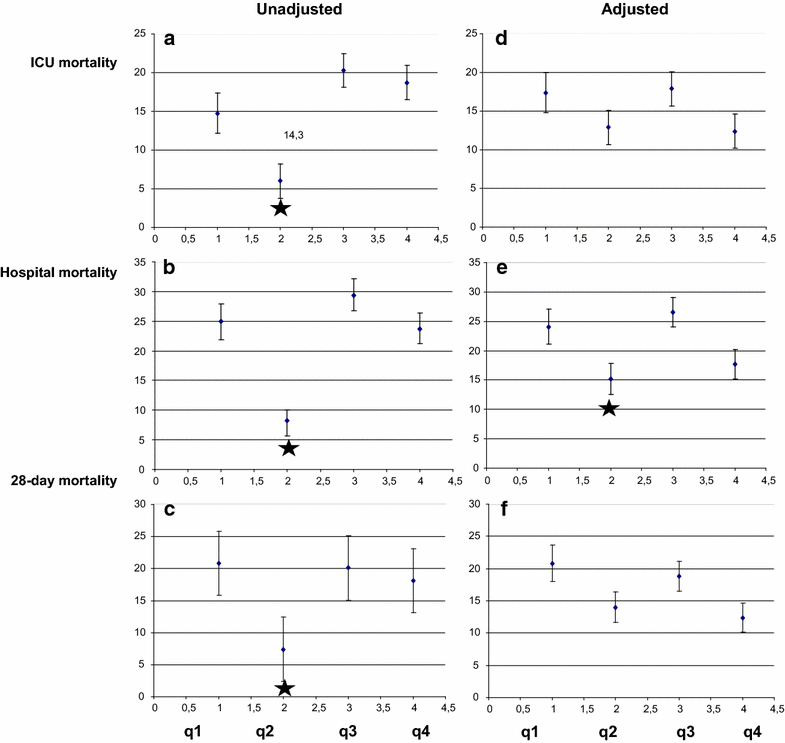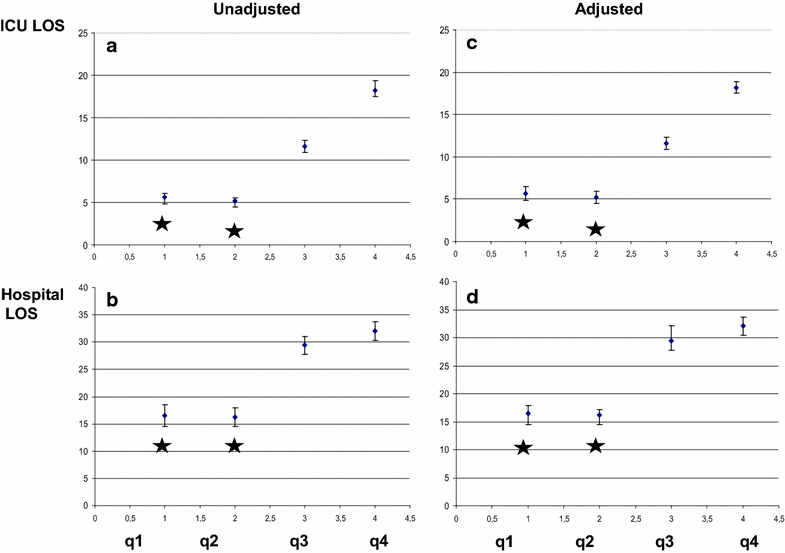A J-shaped relationship between caloric intake and survival in critically ill patients
- PMID: 26541344
- PMCID: PMC4635112
- DOI: 10.1186/s13613-015-0079-3
A J-shaped relationship between caloric intake and survival in critically ill patients
Abstract
Background: There is much controversy around the optimal caloric intake in intensive care unit (ICU) patients, based on the diverging results of prospective studies. Therefore, we assessed the presence of an association between caloric intake and outcome in a large cohort included in the Glucontrol study.
Methods: Patients (n = 1004) were divided into four quartiles (q1-q4) according to the daily caloric intake (n = 251/quartile). ICU, hospital and 28-day mortality and the length of stay (LOS) in ICU and in the hospital were compared between each quartile, before and after adjustment in case of differences in baseline characteristics.
Results: Caloric intake averaged 0.5 ± 0.6 (q1), 3.0 ± 0.7 (q2), 13.4 ± 5.1 (q3) and 32.4 ± 8.5 (q4) kcal/kg/day (p < 0.001 between quartiles). Comparisons among quartiles revealed that ICU, hospital and 28-day mortality were lower in q2 than in the other quartiles. ICU and hospital LOS were lower in q1 and q2. After adjustment for age, type of admission and severity scores, hospital mortality was lower in q2 than in the other quartiles, and LOS was lower in q1and q2 than in q3-q4.
Conclusions: In this large and heterogeneous cohort of ICU short stayers, a J-shaped relationship between the amount of calories provided and outcome was found. These hypothesis generating findings are consistent with the concept of improved clinical outcome by early energy restriction. Trial registration#: ClinicalTrials.gov# NCT00107601, EUDRA-CT Number: 200400391440.
Keywords: Caloric intake; Glucose control; Insulin; Nutrition; Nutritional support; Outcome.
Figures


References
-
- Preiser JC, van Zanten AR, Berger MM, Biolo G, Casaer MP, Doig GS, Griffiths RD, Heyland DK, Hiesmayr M, Iapichino G, Laviano A, Pichard C, Singer P, Van den Berghe G, Wernerman J, Wischmeyer P, Vincent JL. Metabolic and nutritional support of critically ill patients: consensus and controversies. Crit Care. 2015;19:35. doi: 10.1186/s13054-015-0737-8. - DOI - PMC - PubMed
Associated data
LinkOut - more resources
Full Text Sources
Other Literature Sources
Medical

